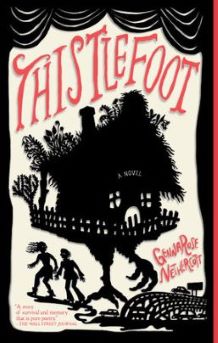A reimagined Baba Yaga reminds us there’s more than one way to tell a tale.

My mother studied Slavic languages in college, so I grew up on stories of Baba Yaga. The one in which a girl flees the witch and her chicken-foot house, throwing down a comb that grows into a forest and a mirror that becomes a lake, is still lodged in my brain.
Later, when I played in an orchestra, Modest Mussorgsky’s “Pictures at an Exhibition” brought the memory of the witch back to me, the melody from “The Hut on Hen’s Legs (Baba Yaga)” stalking my practice sessions.
Of course, when you’re a child, witches are always the bad guys; Disney teaches you to flee from Maleficent, from Ursula, from Snow White’s Evil Queen. (Recently, when I wore a T-shirt with the Sanderson sisters from “Hocus Pocus” on it, several children at the school where I teach felt the need to inform me, eyes wide and backing away, that they were the villains of the movie.)
I’m older now and know better: It’s the witches of the world who underpin its weirdness, who make it wonderful and wild. Often, it is they who offer solutions where no one else will — solutions pricked, perhaps, by thorns or muddied by misperceptions, but solutions nevertheless.
Consequently, I was delighted to happen upon GennaRose Nethercott’s Thistlefoot, a story in which Baba Yaga is portrayed as a complex, relatable character — one who is neither wholly good nor wholly evil, and who is, in some ways, as much a victim as a victor. In Nethercott’s novel, “Yaga” becomes a surname rather than a nickname, and the witch’s descendants are saddled with a daunting task: Protect her house on chicken feet, dubbed Thistlefoot, from an enemy who has been chasing it across a century and an ocean.
Siblings Isaac and Bellatine Yaga have uncanny gifts that make them believe Thistlefoot is a perfect refuge when they inherit it. Immersed in bickering almost from the moment they reunite after years apart, they initially fail to notice that, far from being a sanctuary, Thistlefoot is, in fact, a ticking time bomb. The house is being tracked by a foe unbound by mortal confines, and the Yagas will have to overcome their differences if they hope to survive and save it.
In this retelling of the story, you see, Thistlefoot is not simply a magical house with legs. Rather, when pogroms reached the fictional village of Gedenkrovka in the early 1900s and pierced Baba Yaga’s rural existence, the house sprouted legs to outrun the trauma its inhabitants endured.
Obviously, as anyone who’s endured trauma knows, you can’t outrun it: It lodges in the brain, sometimes causing lasting damage. Epigenetics has shown that it can even be passed down to new generations, reaching through our bodies and into the future. It’s as good an argument against free will as you’ll find.
But trauma, like most things in life, isn’t static. We can learn, adapt, find new ways to heal old wounds. And so it is with the Yagas: Whereas Baba Yaga couldn’t protect her family, Isaac and Bellatine can. Fighting on the side of the witches, they repel the monster threatening them and the memories of their loved ones. In doing so, they learn the importance of keeping those memories alive. What more could any of us ask for?
[Editor’s note: Read the Independent’s review of Thistlefoot here.]
Mariko Hewer is a freelance editor and writer. She is passionate about good books, good food, and good company. Find her occasional insights of varying quality on Twitter at @hapahaiku.

